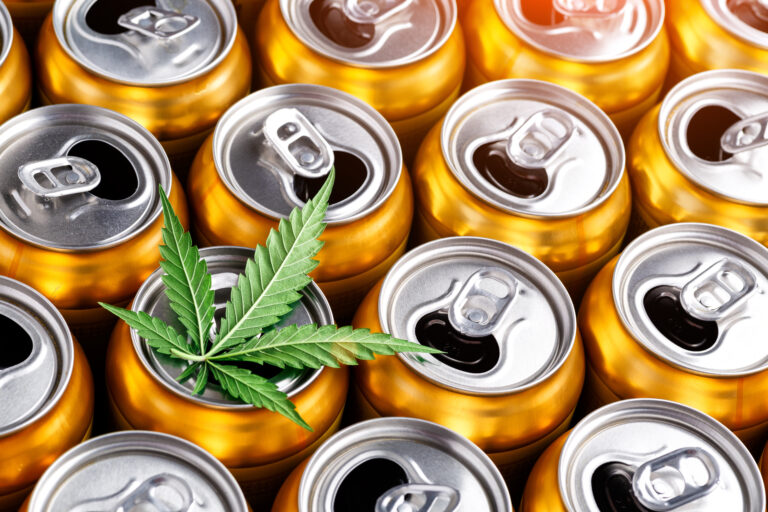CBD and THC beverages make up 19% of the cannabis edibles market, yet most producers use glass or can packaging. To test the compatibility of cannabinoids with polyethylene terephthalate (PET) packaging, Vertosa and Penn Color conducted a 20-week real-time shelf-life study with seven different 680 mL PET bottles, to determine (1) if a reduction in cannabinoid concentration occurs in PET bottles due to packaging absorption; and (2) if any of the additives within the polymer offer protection to the cannabinoids.
Although no cannabinoids were detected as absorbed into any of the packages, there was cannabinoid loss from beverages, resulting in other conclusions.
- For THC, loss levels averaged 22-27%. Because packages with pH neutral liquids (milk, flavored/UHT dairy and water) had the least loss, the authors postulated that pH is a contributing factor in the degradation rate of THC. THC potency retention was also improved in carbonated liquids because the carbonation displaces oxygen, reducing oxidation.
- CBD, on the other hand, oxidizes more slowly and can withstand high oxygen levels much better than THC can, so oxidation is less of a concern.
Among the recommendations made by the authors as a result of the study are that producers choosing to bottle a cannabinoid beverage in PET packaging use filtered water, avoid high heat thermal processes, ensure the cap fits firmly, use a filling technique that minimizes oxygen in the headspace. Additionally, adding antioxidants to the beverage will help protect the THC through its shelf life.
When considering packaging, it also is essential that producers and dispensaries understand the packaging and labeling requirements of their state. While the specific requirements among state vary greatly, there are some general guidelines that are required, or should be followed, everywhere:
- Packaging is to be child-resistant, meeting the Consumer Product Safety Commission (CPSC) standards, and tamper-evident. If not intended for single use, it should be resealable.
- Products are to be clearly labeled as containing cannabis; with THC products including the product name, THC content, serving size, expiration date, and any state-mandated warning and instructions for use.
- Labeling for tracking is also critical with batch and lot number maintained from manufacture to dispensary.
- Although cannabis is not regulated by FDA, standard labeling practices also should be followed, such as ensuring against any false or misleading statements or any health claims (e.g., ability to treat or prevent a disease, etc.).
- Packaging should not appeal to children or mimic candies or other children’s foods (nor should the edibles themselves!)
CBD labeling is generally less specific, although as legalized by the Agriculture Improvement Act of 2018 (the “Farm Bill”), CBD in products must be derived from the hemp plant and have less than 0.3% THC, and the amount labeled must be accurate as we discussed in the March 2023 HashTAG article “Too High or Not High Enough: Cannabis Mislabeling Causes Recalls & Lawsuits.”
For all packaging and labeling of cannabis, CBD, and THC, it is advised that you know your state laws, regularly check and verify labels, and err on the side of caution. Should you have questions or need assistance in your cannabis safety and labeling efforts, give our HashTAG experts a call. We can help!





